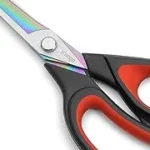Are you wondering why fencing can be so expensive? Well, look no further! In this article, we will delve into the various factors that contribute to the high cost of fencing. From the quality of materials to the expertise required for installation, understanding these aspects will shed light on why fencing comes with a hefty price tag.
When it comes to fencing, one of the main reasons for the elevated cost lies in the materials used. High-quality fencing materials, such as durable metals or treated woods, can significantly drive up the overall expense. Additionally, factors like the size of the area to be fenced, the desired height, and any special features or designs can further contribute to the cost. By exploring these factors, you will gain a better understanding of why fencing can be quite an investment.
Why is fencing so expensive?
There are several factors that contribute to the high cost of fencing. Firstly, the materials used in fencing can be quite expensive. Quality fencing materials such as wood, vinyl, or metal can be costly to purchase. Additionally, the price of these materials can fluctuate depending on the current market conditions and availability.
Another reason for the high cost of fencing is the labor involved in the installation process. Installing a fence requires skilled labor, which comes at a price. Fencing contractors need to be paid for their expertise and time spent on the job. The complexity of the installation, such as the terrain and the type of fencing, can also increase the labor costs.
What other factors contribute to the high cost of fencing?
Aside from materials and labor, there are other factors that contribute to the high cost of fencing. One such factor is the size of the area that needs to be fenced. Larger areas will require more materials and labor, increasing the overall cost. Additionally, if the terrain is uneven or challenging, additional work may be needed to ensure a proper installation, further driving up the cost.
Another factor that affects the cost is the type of fencing chosen. Different types of fencing materials have different price points. For example, wood fencing tends to be less expensive than vinyl or metal fencing. The desired height and design of the fence can also impact the cost, as more intricate designs or taller fences may require additional materials and labor.
Are there any cost-saving options for fencing?
Yes, there are cost-saving options available for fencing. One option is to choose a less expensive fencing material. For example, opting for a chain-link fence instead of a wooden fence can greatly reduce costs. Another option is to consider a DIY installation, which can save on labor costs. However, it’s important to note that DIY installations may require specialized tools and skills, so careful consideration should be given before undertaking this option.
Additionally, shopping around and comparing prices from different suppliers and contractors can help to find the best deal. Some contractors may offer discounts or promotions during certain times of the year, so it’s worth doing some research to find the most cost-effective option.
Does the location affect the cost of fencing?
Yes, the location can affect the cost of fencing. The cost of materials and labor can vary depending on the region or city. In areas where there is a high demand for fencing services, prices may be higher due to increased competition among contractors. Similarly, in remote or hard-to-access locations, the cost of transportation and logistics can add to the overall cost of the project.
Local regulations and permits may also impact the cost of fencing. Some areas have specific requirements or restrictions on the type of fencing allowed, which may require additional expenses to meet the local code. It’s important to consult with local authorities and contractors to ensure compliance with any regulations and to obtain the necessary permits.
Is the maintenance cost of fencing high?
The maintenance cost of fencing can vary depending on the type of fencing material chosen. Wood fencing, for example, may require regular staining or painting to maintain its appearance and protect it from the elements. This ongoing maintenance can add to the overall cost of owning a wooden fence.
On the other hand, vinyl and metal fencing generally require less maintenance. Vinyl fencing is known for its durability and resistance to rot, insects, and weathering, reducing the need for frequent maintenance. Metal fencing, such as aluminum or wrought iron, can also be relatively low maintenance, but may require periodic touch-ups to prevent rusting.
Can fencing add value to a property?
Yes, fencing can add value to a property. A well-maintained and aesthetically pleasing fence can enhance the curb appeal of a home, which can be a major selling point for potential buyers. Fencing can also provide privacy and security, which are highly desired features for many homeowners.
In addition to the visual appeal and functionality, fencing can also define property boundaries, which can be important for legal and practical purposes. Having a clearly defined and enclosed yard can increase the perceived value of a property and make it more attractive to buyers.
What should be considered when budgeting for fencing?
When budgeting for fencing, several factors should be considered. Firstly, the size of the area to be fenced plays a significant role in determining the overall cost. Larger areas will require more materials and labor, so it’s important to accurately measure the dimensions of the space.
The type of fencing material chosen should also be factored into the budget. Different materials have different price points, and it’s essential to select one that fits within the allocated budget. Additionally, any desired features or customization, such as gates or decorative elements, should be considered when budgeting.
Does the height of the fence affect the cost?
Yes, the height of the fence can affect the cost. Taller fences typically require more materials and labor, which can increase the overall cost of the project. The additional height can also impact the complexity of the installation, especially if the terrain is uneven or challenging.
It’s important to note that some local regulations or homeowners’ association guidelines may impose restrictions on the maximum allowable fence height. It’s crucial to check these regulations before planning and budgeting for a taller fence, as additional permits or approvals may be required.
What are some alternative options to traditional fencing?
For those looking for alternative options to traditional fencing, there are a few choices available. One option is to consider using natural barriers such as hedges, shrubs, or trees to create privacy and define property boundaries. These can be cost-effective alternatives that also provide a more natural and aesthetically pleasing look.
Another alternative is the use of temporary fencing, which can be a practical solution for specific events or construction sites. Temporary fencing is generally less expensive than permanent fencing and can be easily installed and removed as needed. This option is particularly useful for those who require fencing only temporarily.
What are the benefits of hiring a professional fencing contractor?
Hiring a professional fencing contractor can bring several benefits. Firstly, professionals have the expertise and experience to ensure that the fencing installation is done correctly and efficiently. They have the necessary knowledge to handle various types of fencing materials and can provide guidance on the best options for specific needs and budgets.
Professional contractors also have the proper tools and equipment to complete the job safely and accurately. They are trained in ensuring that the fence is installed securely and meets any local regulations or codes. Additionally, hiring a professional can save time and effort, as they will handle all aspects of the installation, including obtaining permits if necessary.
What are some common challenges in fencing installation?
There can be several challenges in fencing installation. One common challenge is uneven terrain, which can make it difficult to install a fence in a straight line. In these cases, additional measures may be needed to ensure that the fence is properly aligned and secure.
Another challenge is encountering underground utilities or obstacles while digging post holes. It’s essential to call the local utility companies to mark the location of any underground lines before starting the installation process. This will help prevent accidents or damage to utility lines.
Can fencing be installed on any type of terrain?
Fencing can generally be installed on various types of terrain, but different terrains may present certain challenges. Uneven or sloped terrain may require additional work, such as installing stepped panels or using adjustable brackets to accommodate the changes in elevation.
In some cases, especially on rocky or hard soil, special equipment may be required for digging post holes or securing the fence. It’s important to assess the terrain and consult with a professional to determine the best approach for installing a fence on a particular type of terrain.
What are some factors to consider when choosing a fencing material?
When choosing a fencing material, several factors should be considered. Firstly, the desired level of privacy and security should be taken into account. Some materials, such as wood or vinyl panels, provide more privacy compared to chain-link fencing.
Additionally, the maintenance requirements and longevity of the material should be considered. Some materials, like vinyl or metal, require less maintenance compared to wood, which may need regular staining or painting. The durability of the material and its ability to withstand the local weather conditions should also be evaluated.
Can fencing be considered a good investment?
Fencing can be considered a good investment for several reasons. Firstly, as mentioned earlier, a well-maintained and visually appealing fence can enhance the curb appeal of a property, potentially increasing its value. This can be especially beneficial when it comes time to sell the property.
Fencing can also provide practical benefits such as privacy and security, which are highly valued by homeowners. Having a fenced-in yard can provide a sense of safety and peace of mind, particularly for families with children or pets. Additionally, fencing can define property boundaries, making it easier to establish and maintain clear separation from neighboring properties.
What are some popular fencing materials?
There are several popular fencing materials available, each with its own advantages and disadvantages. Wood is a classic and versatile option that provides a natural look, but it requires regular maintenance. Vinyl is a low-maintenance alternative that is resistant to rot and insects. Metal fencing, such as aluminum or wrought iron, offers durability and security, but it may require occasional touch-ups to prevent rusting.
Chain-link fencing is a cost-effective option that provides a clear boundary without obstructing the view. Bamboo fencing is an eco-friendly choice that adds a unique and natural aesthetic to a property. Ultimately, the choice of material will depend on factors such as personal preferences, budget, and specific needs.
What are the benefits of wooden fencing?
Wooden fencing offers several benefits that make it a popular choice for many homeowners. Wood provides a natural and timeless aesthetic that can enhance the overall look of a property. It can be easily customized and stained or painted to match any design or color scheme.
Wooden fencing also offers privacy and noise reduction, which can be particularly advantageous for those who live in densely populated areas. Additionally, wood is a renewable resource, making it an environmentally friendly choice for those concerned about sustainability. However, it’s important to note that wooden fencing requires regular maintenance to protect it from rot, insects, and weathering.
What are the benefits of vinyl fencing?
Vinyl fencing has become increasingly popular due to its many benefits. One major advantage is its low maintenance requirements. Vinyl is resistant to rot, insects, and weathering, which means it does not require staining, painting, or sealing like wood fencing does.
Another benefit of vinyl fencing is its durability. Vinyl is designed to withstand harsh weather conditions, making it a long-lasting and cost-effective option. Additionally, vinyl fencing comes in a variety of styles and colors, allowing homeowners to choose the look that best suits their preferences and complements their property.
What are the benefits of metal fencing?
Metal fencing, such as aluminum or wrought iron, offers a range of benefits. One main advantage is its strength and durability. Metal fences are known for their ability to withstand harsh weather conditions and resist impact. This makes them a great choice for those seeking a long-lasting and secure fencing option.
Metal fencing also provides a high level of security. The sturdy construction and lack of gaps make it difficult for intruders to climb or bypass the fence. Additionally, metal fencing requires minimal maintenance, with occasional touch-ups to prevent rusting being the primary care needed.
What are the benefits of chain-link fencing?
Chain-link fencing offers several benefits that make it a popular choice for various applications. One major advantage is its affordability. Chain-link fencing is typically less expensive than other materials, making it a cost-effective option for those on a budget.
Chain-link fencing also provides a clear boundary without obstructing the view. This can be particularly useful for those who want to maintain visibility while still defining their property. Additionally, chain-link fencing requires minimal maintenance, with occasional cleaning being the primary care needed.
What are the benefits of bamboo fencing?
Bamboo fencing has gained popularity due to its unique and eco-friendly qualities. One major advantage of bamboo is its sustainability. Bamboo is a fast-growing plant that can be harvested without causing significant environmental damage, making it a renewable and environmentally friendly fencing option.
Bamboo fencing also offers a natural and exotic aesthetic that can enhance the look of a property. It provides privacy and can act as a sound barrier, making it suitable for those seeking tranquility in their outdoor space. Additionally, bamboo fencing is relatively easy to install and requires minimal maintenance.
Are there any drawbacks to certain fencing materials?
While each fencing material has its benefits, there can be certain drawbacks to consider. Wood fencing requires regular maintenance, such as staining or painting, to protect it from rot, insects, and weathering. Additionally, wooden fences may be more susceptible to damage from extreme weather conditions.
Vinyl fencing, although low maintenance, may be more prone to cracking or fading over time, particularly in areas with high temperatures or intense sunlight. Metal fencing, while durable, can be more expensive compared to other materials. It may also require periodic touch-ups to prevent rusting.
Can fencing increase privacy?
Yes, fencing can increase privacy. Fences provide a physical barrier that separates your property from the surrounding area, creating a sense of privacy and seclusion. The height and design of the fence can play a role in the level of privacy it provides.
Some fencing materials, such as wood or vinyl panels, offer more privacy compared to chain-link fencing. Additionally, adding features like lattice panels or planting tall shrubs or trees along the fence line can further enhance privacy.
Can fencing enhance home security?
Yes, fencing can enhance home security. A properly installed and sturdy fence acts as a deterrent to potential intruders, making it more difficult for them to access your property. Fencing also provides a clear boundary, making it easier to monitor and control access to your home.
Choosing a fencing material that is difficult to climb, such as metal or vinyl, can further enhance security. Additionally, adding features like locking gates or installing security cameras and motion sensor lights can provide an extra layer of protection.
What are some legal considerations when installing a fence?
When installing a fence, it’s important to consider any legal requirements or restrictions that may apply. Local regulations and homeowners’ association guidelines may dictate the height and design of the fence, as well as its location on the property.
Additionally, obtaining the necessary permits may be required before starting the installation process. Failure to comply with these regulations can result in fines or the need to remove or modify the fence. Consulting with local authorities and reviewing any applicable rules and regulations is crucial to ensure a smooth and legal installation.
Can fencing be used for decorative purposes?
Yes, fencing can be used for decorative purposes in addition to its functional role. Many fencing materials, such as wrought iron or ornamental metal, are specifically designed to be visually appealing. They can add a touch of elegance and sophistication to a property.
Other materials, such as wood or vinyl, can also be customized or enhanced with decorative elements such as lattice panels or decorative post caps. These decorative features can help to create a unique and personalized look, adding style and charm to your outdoor space.
Why is Fencing so Unrealistic?
In conclusion, the high cost of fencing can be attributed to several factors. First and foremost, the materials used in fencing are often of high quality and designed to withstand the test of time. From sturdy metal posts to durable wood panels, these materials are built to last and provide both security and aesthetic appeal.
Secondly, the installation process for fencing requires skilled labor and specialized equipment. Fencing professionals need to carefully measure the area, dig post holes, and secure the panels or wires in place. This level of expertise and precision adds to the overall cost of the project.
Lastly, fencing serves a crucial purpose in providing privacy, security, and boundaries. It not only enhances the appearance of a property but also adds value to it. The demand for fencing, combined with its functional benefits, contributes to the overall expense.
While the initial investment in fencing may seem steep, it is important to consider the long-term benefits it provides. The added security, privacy, and aesthetic appeal can greatly enhance the value and enjoyment of a property. So, while fencing may be expensive, it is undoubtedly a worthwhile investment in the long run.






